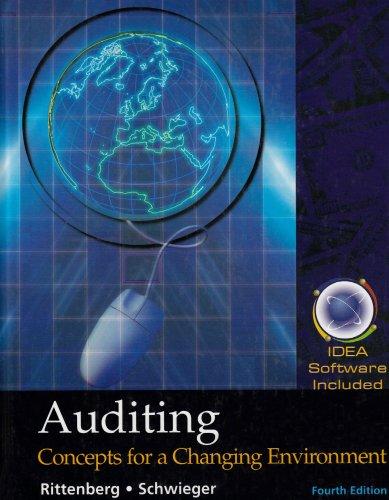Mead, CPA, was engaged to audit Jiffy Co.s financial statements for the year ended August 31, 2002.
Question:
Mead, CPA, was engaged to audit Jiffy Co.’s financial statements for the year ended August 31, 2002. Mead is applying the following sampling procedures.
During the prior years’ audits, Mead used classical variables sampling in performing tests of controls on Jiffy’s accounts receivable. For the current year Mead decided to use PPS sampling in confirming accounts receivable, because PPS sampling uses each account in the population as a separate sampling unit. Mead expected to discover many overstatements, but présumed that the PPS sample still would be smaller than the corresponding size for classical variables sampling.
Mead reasoned that the PPS sample would automatically result in a stratified sample, because each account would have an equal chance of being selected for confirmation.
Additionally, the selection of negative (credit) balances would be facilitated without special considerations.
Mead computed the sample size using the risk of incorrect acceptance, the total recorded book amount of the receivables, and the number of misstated accounts allowed.
Mead divided the total recorded book amount of the receivables by the sample size to determine the sampling interval. Mead then calculated the standard deviation of the dollar amounts of the accounts selected for evaluation of the receivables.
Mead’s calculated sample size was 60, and the sampling interval was determined to be \($10,000.\) However, only 58 different accounts were selected, because two accounts were so large that the sampling interval caused each of them to be selected twice. Mead proceeded to send confirmation requests to 55 of the 58 customers.
Three selected accounts each had insignificant recorded balances under \($20.\) Mead ignored these three small accounts and substituted the three largest accounts that had not been selected in the sample. Each of these accounts had balances in excess of \($7,000,\) so Mead sent confirmation requests to those customers.
The confirmation process revealed two differences. One account with an audited amount of \($3,000\) had been recorded at \($4,000.\) Mead projected this to be a \($1,000\) misstatement. Another account with an audited amount of \($2,000\) had been recorded at \($1,900.\) Mead did not count the \($100\) difference, because the purpose of the test was to detect overstatements.
In evaluating the sample results, Mead determined that the accounts receivable balance was not overstated, because the projected misstatement was less than the allowance for sampling risk.
Required:
Describe each incorrect assumption, statement, and inappropriate application of sampling in Mead’s procedures.
Step by Step Answer:

Auditing Concepts For A Changing Environment With IDEA Software
ISBN: 9780324180237
4th Edition
Authors: Larry E. Rittenberg, Bradley J. Schwieger





